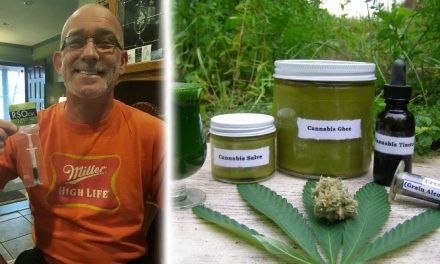Ashwagandha has been used as an herbal remedy for hundreds of years to help the body deal with stress. Extracts from Ashwagandha root helps normalize levels of serum thyroid hormones, suggests a new pilot study from India.
RELATED STORY:
Ashwagandha also known commonly as Indian ginseng, poison gooseberry,or winter cherry is a plant that flourishes in India and North America. The roots of the ashwagandha plant have been employed for millennia by Ayurvedic healers. Ashwagandha has many beneficial elements, including flavonoids and members of the withanolide class. Numerous modern studies have found that ashwagandha shows great promise for being effective in reducing inflammation, decreasing stress, increasing mental activity, invigorating the body, and as an antioxidant. It is even known to relieve arthritis better than medication.
Eight weeks of supplementation with Ashwagandha root extract were associated with normalization of the thyroid stimulating hormones (TSH), serum thyroxine (T4) and serum triiodothyronine (T3) in people with elevated TSH levels.
RELATED STORY:
“The results of the present study are in accordance with previous studies,” wrote the researchers in the Journal of Alternative and Complementary Medicine. “The results indicate a possible role for ashwagandha in regulating HPT axis. The anti-stress and cortisol-lowering effect of ashwagandha may provide a suitable explanation for the current outcome.”
The Flagship Herb of Ayurveda
Ashwagandha (Withania somnifera) has been gaining traction in the mainstream US market with consumers embracing its wide-ranging body of health benefits, which include supporting stress, cognitive function, sleep, metabolic wellness, adrenal function, sports performance, and more.
According to a monograph from the American Herbal Pharmacopoeia (AHP), the herb has a history of use in ayurvedic medicine that dates back as much as 4,000 years to the teaching of renowned scholar Punarvasu Atreya, and in subsequent works that make up the ayurvedic tradition. The name of the herb derives from Sanskrit, and means “smells like a horse”, which refers to the strong smell of the root which is said to be redolent of horse sweat or urine.
Kartikeya Baldwa, Director of Ixoreal Biomed, the marketer of KSM-66, said: “Ashwagandha has been used traditionally as an adaptogen to rejuvenate health, maintain homeostasis, sustain normal thyroid function and maintain hormonal balance in human body. However, very few modern published papers have reported ashwagandha’s beneficial effects on thyroid function. This is the first clinical study that supports the traditional claim of ashwagandha as a thyroid modulator.
“From the scientific literature, we know that ashwagandha root is a calming agent and promotes balance in the body to increase or decrease key hormone levels to bring them to appropriate levels. The present publication bolsters the clinical usage of KSM-66 Ashwagandha for maintaining normal thyroid function. KSM-66 is one of the few ingredients shown to be clinically effective for this application.”
Study Details
Ashwagandha is the number eight bestselling herb in natural channel, with sales growing 55% from 2015 to 2016 to reach $8.7 million, according to the American Botanical Council’s 2016 Herb Market Report.
The new double blind, randomized, placebo-controlled study involved 50 people with elevated TSH levels. So called subclinical hypothyroidism is described as a thyroid disorder with no obvious symptoms of thyroid deficiency. Participants were randomly assigned to receive either ashwagandha supplements (600mg daily) or placebo for eight weeks.
Results showed that ashwagandha significantly improved serum TSH, serum T4 and serum T3 levels, achieving change toward normalization of 19%, 45% and 21% respectively.
“The outcome of the present study highlights the beneficial role of ashwagandha root extract for normalizing thyroid hormone levels in subclinical hypothyroid patients; however, further studies are required to elucidate the underlying mechanisms of ashwagandha,” concluded the researchers.
*Article originally appeared at Prevent Disease.












